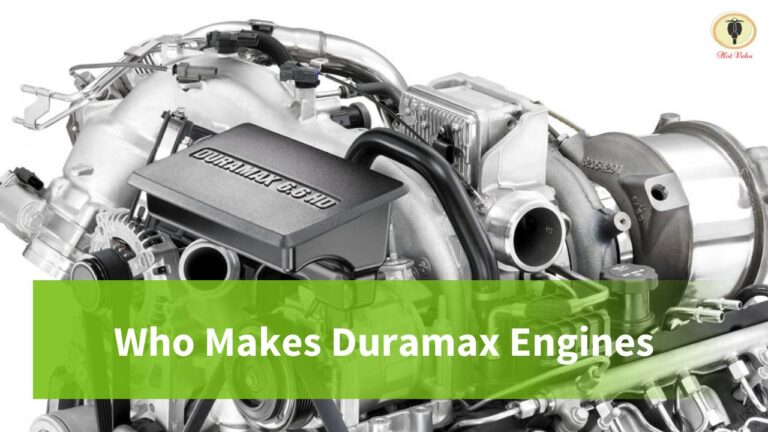DMax manufactures Duramax engines. With its capability for sustained power, the Duramax V8 engine is an ideal choice in commercial vehicles.
This family comes with several different variations that offer strong outputs but vary based on application requirements like fuel efficiency or horsepower ratings, making them perfect whichever way you look!
Who owns DMax?
DMax Ltd is a joint venture between General Motors and Isuzu. GM owns 60% of the company, while Isuzu owns 40%.
Isuzu has a long history of diesel engine development and manufacture, while General Motors is recognized as one of the world’s largest producers of petrol engines. Combining these two companies’ strengths makes DMax Ltd one of the most successful engine producers in the world.
Duramax History
DMAX Ltd. was created in 2000. They built 1.5 million Duramax engines for GM and Isuzu.
GM, Dodge, and Ford all have high-pressure standard rail injection engines. GM had the early lead but was the last to integrate an accurate high-pressure system.
The Duramax is an aluminum-headed 6.6L engine that produces 300 hp and 520 lb-ft of torque in its most robust configuration and continues to grow stronger with age.
The LB7 engine had many features, but its direct fuel injection would be the most notable.
The LLY Duramax engine, among other things, contains an improved injection system and a variable-geometry turbocharger.
Are Duramax Engines Any Good?
GM and Isuzu initially designed the Duramax engine in light-duty trucks and vans. However, the engine proved popular, so it was also adapted for medium-duty trucks and commercial applications.
The Duramax engine is reliable, though it does have some drawbacks. For starters, the first 100K miles are tough on these engines as they’re not always able to withstand everyday use without issues cropping up sooner or later – even with GM recognizing this problem and offering a 200k mile warranty for updated parts. At one point!
Some Duramax Engines:
Here are some Duramax Engines:
LB7 (2001 – 2004)
When the LB7 engine was first introduced in 2001, it had an innovative composite design cylinder head later abandoned. This 32-valve high-performance motor was good until 2004 when it started requiring more octane and improved.
LLY (mid 2004 – 2006)
The engine is a robust and reliable 32-valve design that has been in production since mid-2004. It features high-pressure common rail direct injection with aluminum cylinder heads to reduce weight and an advanced turbocharging system that provides excellent power output levels for both street driving and off-road adventures alike!
The 2006 LLY is a completely different engine than the 2004.5 – 2005 LLYs. The LBZ’s 2006 model has almost every upgrade made to it, with the exception of the programming.
LBZ (2006-2007)
This engine is an evolutionary design that superseded the LLY and corrected many of its issues. It was available from 2006-2007. The LBZ featured redesigned heads, pistons, and injectors that improved reliability while meeting emissions regulations.
DMax fixed the overheating issue on LLY by adding a better cooling capacity. Improved the sealed turbo bearings, new glow-plugs reduced start time, and better piston rings.
LBZ engine has much better fuel injectors that gave it better performance and a quieter engine.
LMM (mid 2007 – 2010)
The Duramax LMM is a six-cylinder diesel engine released halfway through 2007 and continued production until 2011. It’s mated with an Allison transmission, which can be found in many cars, including ford’s owner’s Trident Iceni model!
LGH (2010-2011)
The Duramax 6.6L engine (VIN code “L”) is used on 2010 interim and 2011 Chevrolet Express, GMC Savana vans, and 2011 Silverado/GMC Sierra trucks with RPO ZW9(chassis cabs). It produces 335 bhp at 3100 RPM alongside its 670 ft-lbs of torque at 1500 rpm, making this one powerful truck!
LML (2011 – 2016)
The 2011–2016 version of the Isuzu/GM Duramax V8 diesel engine is often referred to as LML or 8 for short. The engine has been improved. It runs more cleanly than before because of changes required by law. But the engine is also more durable, thanks to new design features that will enhance oil flow.
L5P (2017 To Present)
L5P is an evolution of the LML with 445 horsepower and 910 pound-feet of torque. It continues to use some of the same design features but has been updated with new technology that makes it even more durable and efficient than its predecessors!
Duramax Engines Reliability
Duramax engines are known for their high-quality construction and reliable performance. They produce tremendous torque and horsepower outputs, making them perfect for various applications.
A common issue with these first models was injector failure on LB7 engine versions, but this has been fixed in later years as more were produced without any problems now!
How does Duramax Engine Warranty work?
With the Duramax Engine Warranty, you can receive ten years or up to 300K miles of guaranteed protection and a DOLLAR$ Rebate Check for your following oil change!
This warranty covers more than 15 vehicle engine parts, and it’s completely transferable. If you sell your car, the warranty goes with it. The new owner takes the car to a GM dealership for an engine inspection, and if all is good, the warranty will be transferred!
When your car engine needs a Replacement?
When it comes to the engine, you never know what could go wrong. Engine problems are easy enough for a mechanic who knows his stuff and can fix any issue quickly!
Following the factory’s recommended maintenance schedule is essential to keep your engine running smoothly for a long time. If you notice any of these common signs, an auto parts store immediately and prevent further damage!
1. Knocking or strange noises
When you hear that constant knocking noise coming from your engine, the bearings have a problem. This can happen because they don’t get enough lubricant and start seizing or wear gotten so high on them over time- leading to an expensive rebuild of the lower half of this issue isn’t fixed!
2. Loss of performance
You might have a problem with your engine if it is not starting, has rough idles, or has difficult starts. In addition, there could be issues such as malfunctioning sensors and dirty filters causing these problems!
But if you think that your car’s engine problems are mechanical, take it to an auto shop for testing and computer analysis.
Car Exhaust Smoke Colors
You can tell if your engine is failing by the color of smoke coming out of its tailpipe. If it’s blue, gray, or black, there might be a problem with compression in one or more cylinders, resulting in poor gas mileage and even stalling on occasion!
Does Smoke Color IdentifiesCar’ss Health?
The color of smoke can help you identify car problems. Mechanics and technicians alike need to know which parts need fixing first without having too much work on their plate at once!
White Smoke (It is Normal)
The reason for the white exhaust smoke is that water vapor builds up in your car’s system. So it can be notified when it starts to snow, especially if you have an old vehicle with low engine power or flexibility!
Blue Or Gray Exhaust Smoke Isn’t Considered Normal)
The car is leaking oil! This could be caused by anything like a damaged valve seal, worn piston rings, or cylinder walls, and you might need professional help to find out what’s wrong with your ride.
Black Exhaust Smoke (Something Serious)
If you notice black exhaust smoke coming out of your car when it burns more fuel than usual, there could be a problem with its air filter or injection system. It’s best if someone who knows what they’re doing checks for these issues so they won’t end up paying in lower performance!
Persistent, Milky White/gray Exhaust Smoke (Serious)
When your car constantly produces a thick white or gray plume from the tailpipe, it may have because there’s been an issue with its head gasket. Journalist Paul Brand explains that the “coolant would flow through these hot combustion chambers and out onto one side as they started up.” If there is a leak in the summer, the coolant will quickly escape, and your car will stop working. You won’t be able to call for help.
Frequently Asked Questions
Here are some questions and answers to help you more about the Duramax Engines:
The LB7 is the first-generation Duramax and was released in 2001. It is often considered the best of the Duramax engines because it had more power and was more reliable than the other models.
2003 and 2004 LB7 is the best because of the improved electrical system, dual-zone HVAC, and other upgrades.
LBZ is the most reliable and trouble-free Duramax engine.
Since 2006 LLY has all the LBZ features and is cheaper, it will be a good choice.
The LB7 is the best Duramax engine because it is more powerful and reliable than the other models. It was released in 2001 and had upgrades in 2003 and 2004. The LBZ is the most reliable and trouble-free Duramax engine.
Both are good engines, but the LBZ is more reliable.
You may need to replace the LB7 injector every 100k miles, while very few LBZ has an injector issue.
It was founded on July 17, 2000.
Conclusion:
The article discusses the Duramax engines and their everyday problems. The engines are made by General Motors and Isuzu Diesel Services of America, and they are known for their reliability. However, some common issues can occur, such as knocking noises, loss of performance, and blue, gray, or black smoke coming from the exhaust pipe. If these issues are not fixed, they can lead to more severe problems over time.

